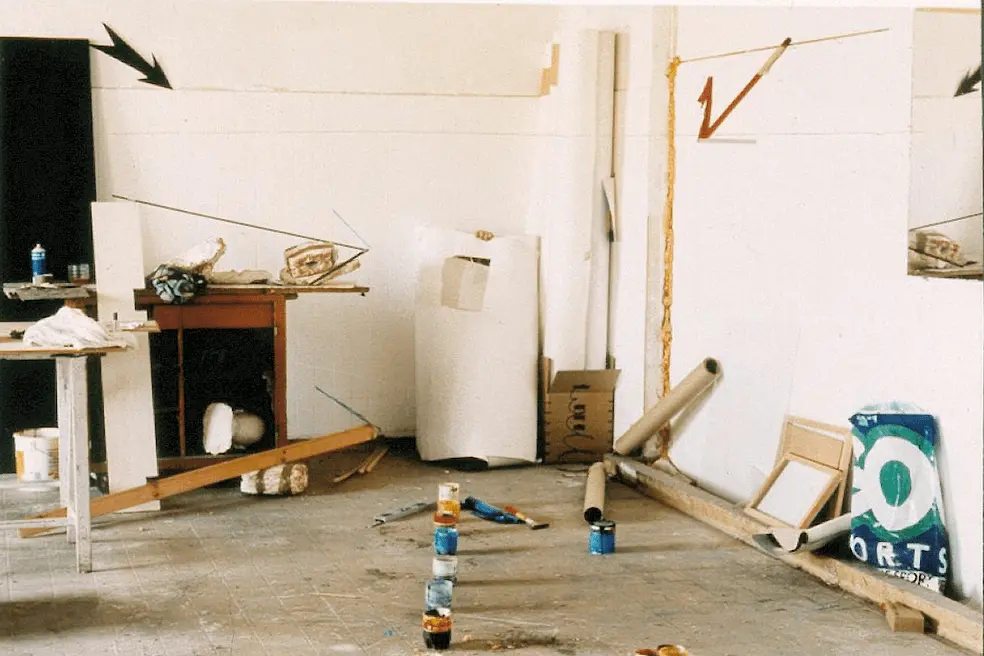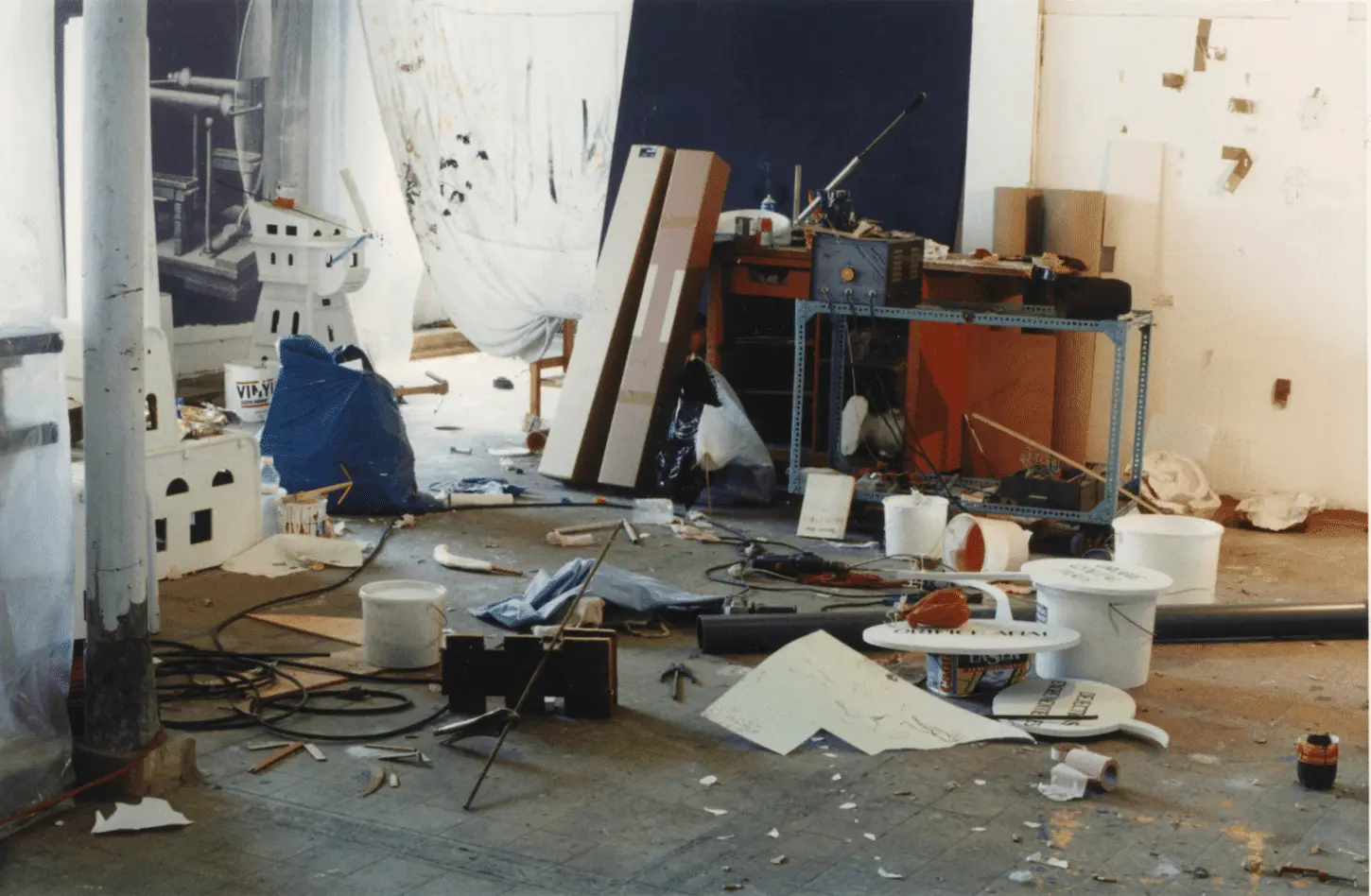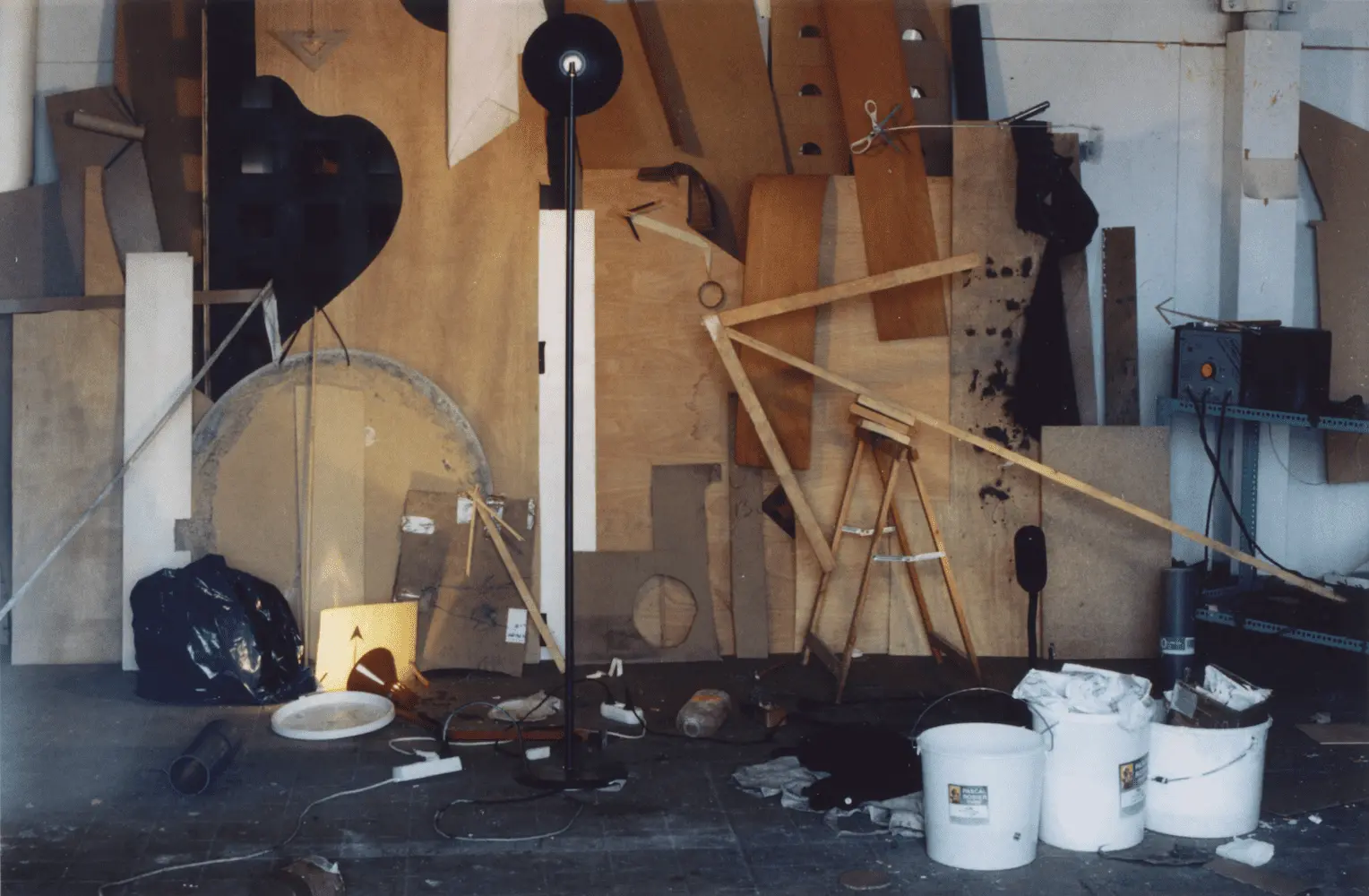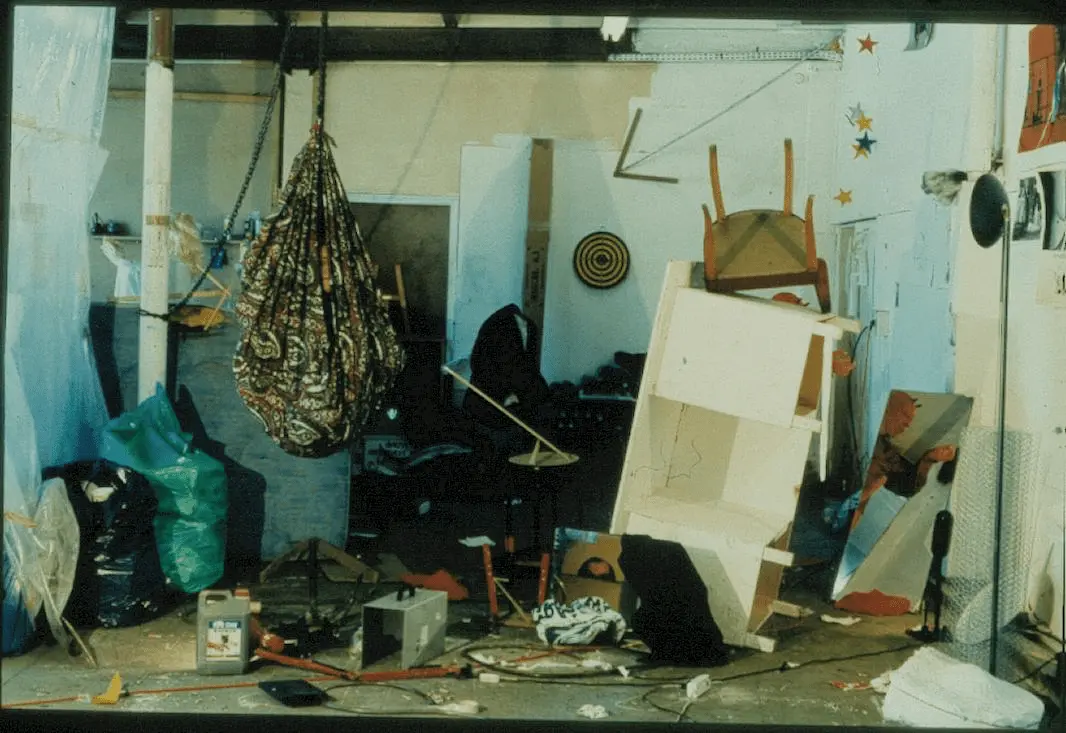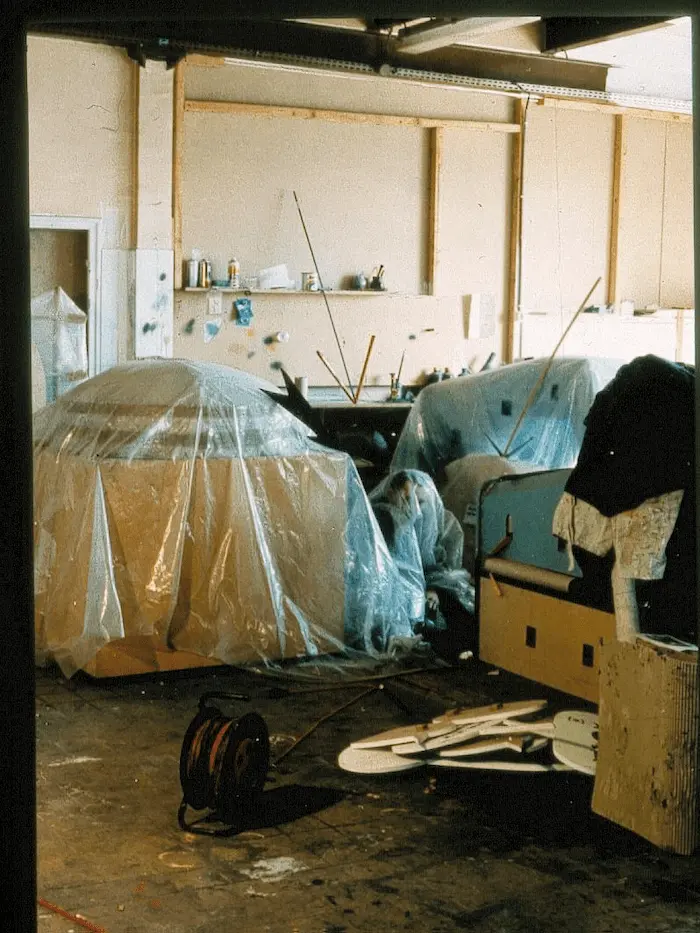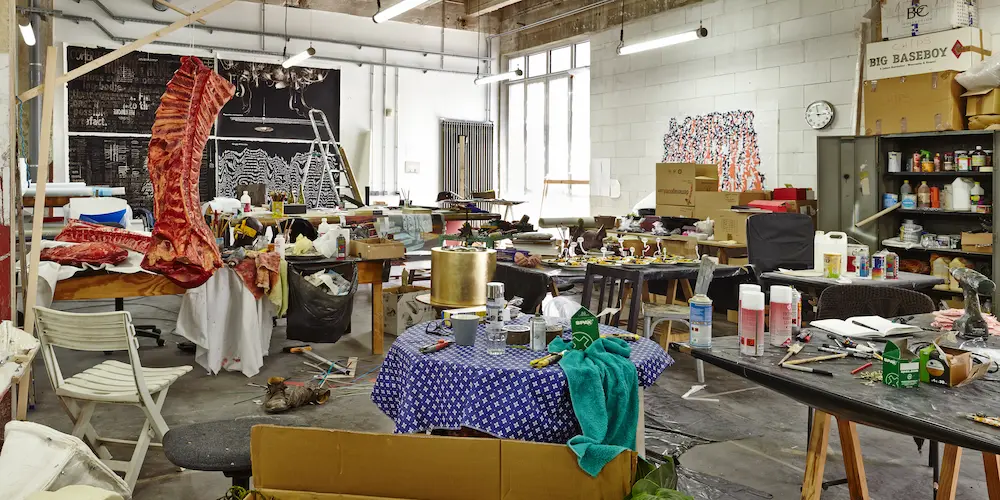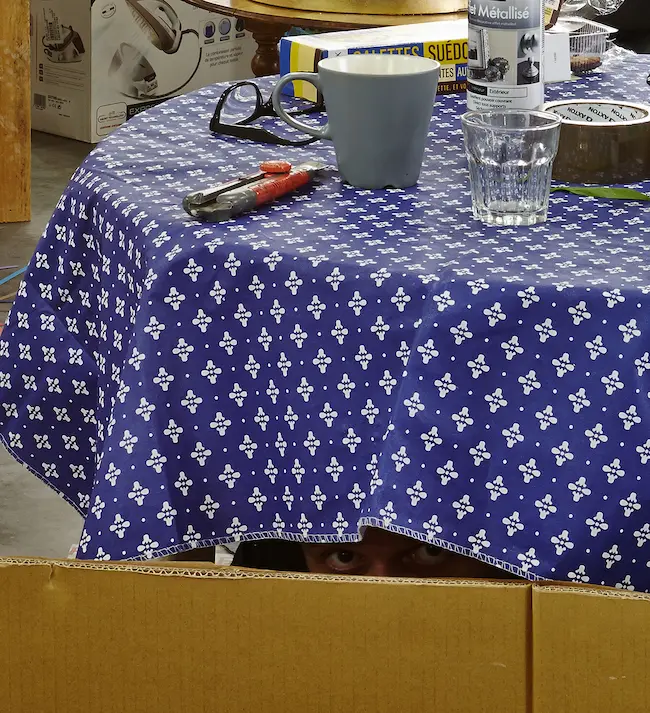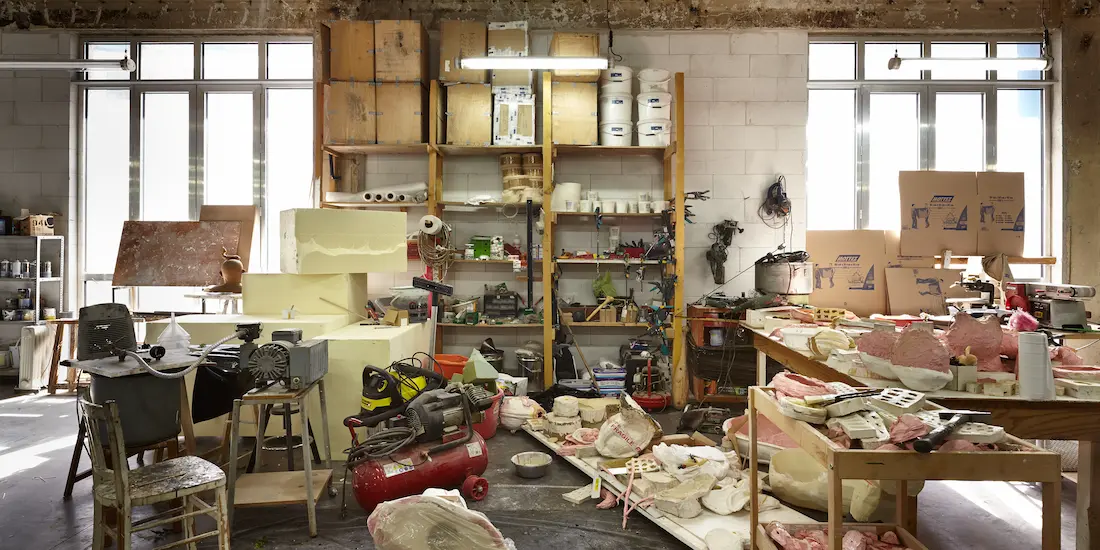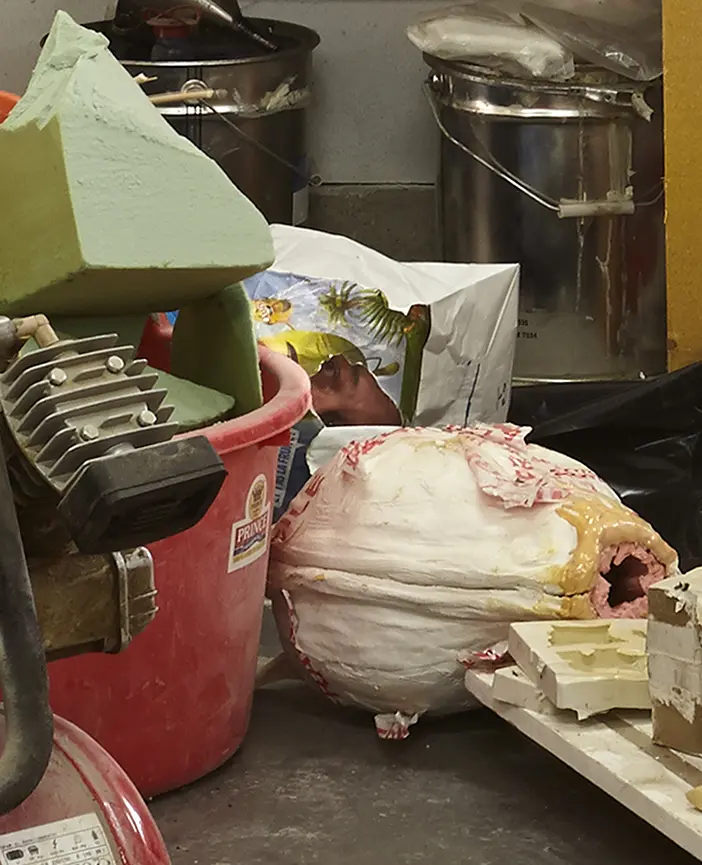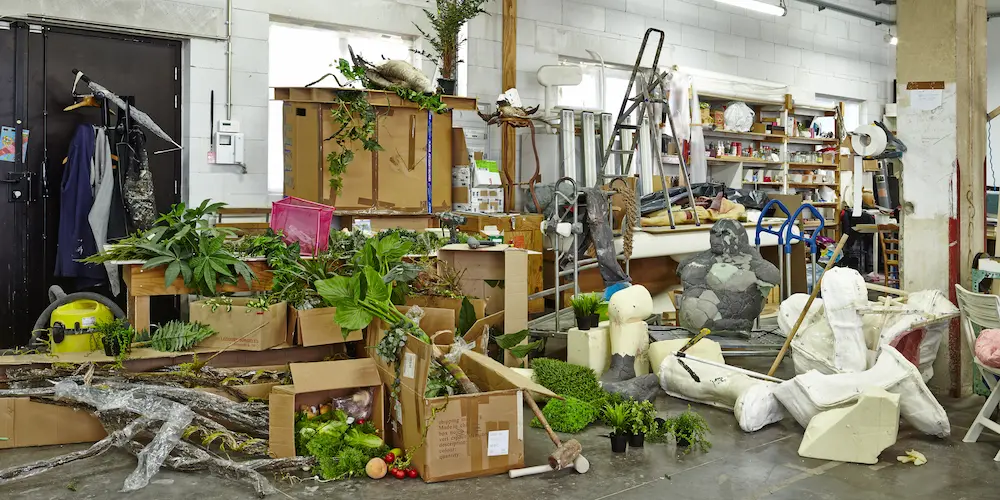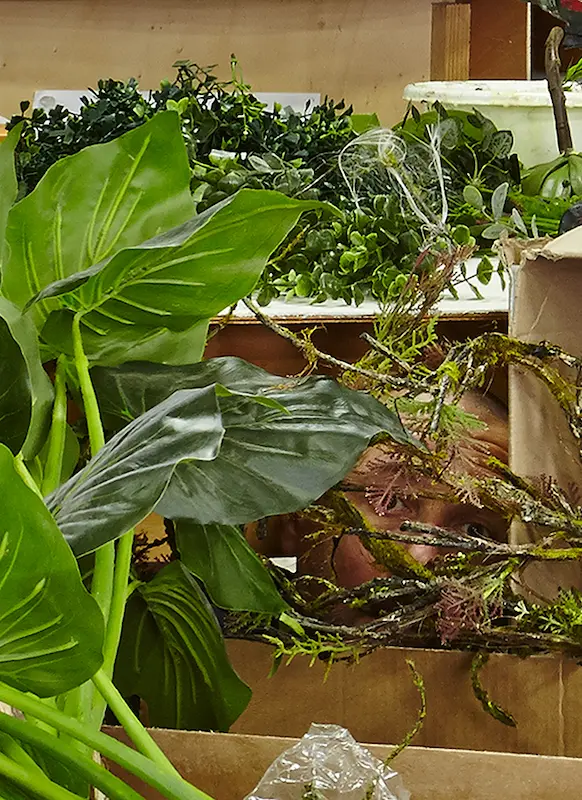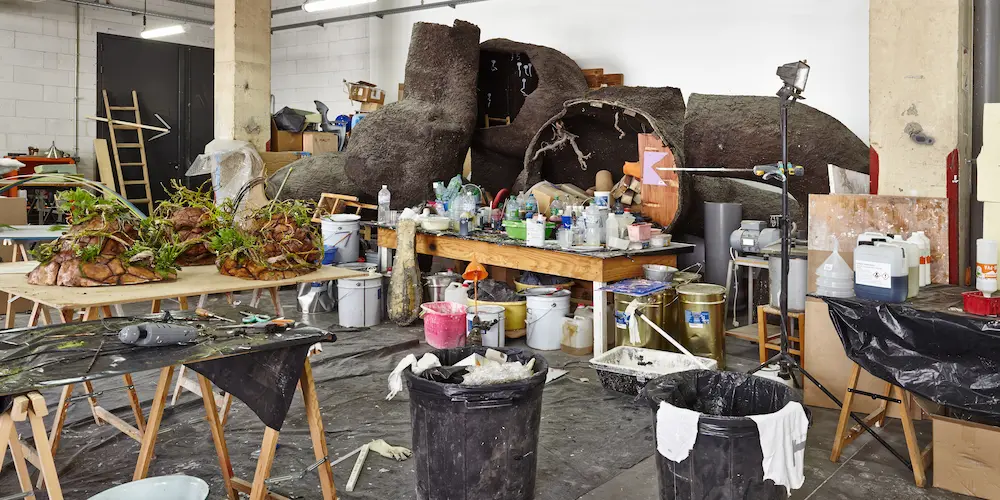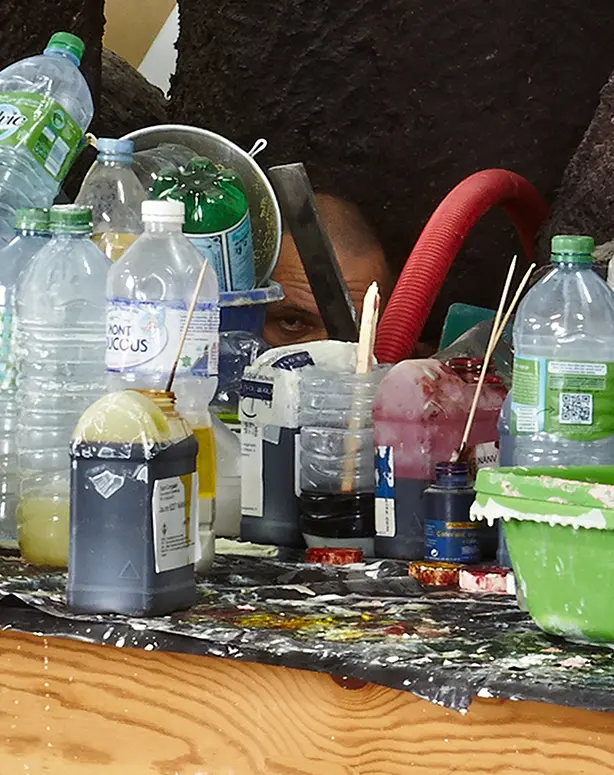Hidden in the Studio. (1995-2015)
To include the photographs “Hidden in the studio” in a body of sculpture is unexpected, but Gilles Barbier insists on it. He explains:
“I’m not a photographer, far from it. I was having fun constructing a network of arrows indicating a region of the studio. These arrows, made of odds and ends, could only be identified from a precise point, the point known in optics as the ‘king’s place’. Then I’d build a hiding place for the vanishing point and place the camera in the right spot. Working alone, I had to set the self-timer to give myself time to run and hide. I made numerous attempts and, in my haste, sometimes slipped or stumbled in the mess of my set-up. I’d smash my face and have to rebuild everything and adjust it meticulously again. These sculptures were delicate and fragile, but above all ruthlessly orderly beneath their apparent disorder”.
Extract from an interview with Tom Collins, (Henry Art Gallery, Seattle, 1999).
Read more
Jean François Taddei: “Gilles Barbier”.
Seeing all the arrows converging on him, on that precise point where he can no longer escape (the vanishing point, if you want to put it another way), you’d think he’d just invented perspective, and that to punish him for his crime, his own archers are putting him to death. All-wood arrows. Top left, the black arrow. Right, the mirror, its reflection. Bottom left, the wood used to make the frames and, for the dots, two rolls of paper or canvas. On the floor, in the middle, plastic bottle bottoms, poor paint pots lined up: at the end, various tools forming points. Where’s the artist hiding? What’s the martyr’s name?
Appearance, disappearance, occupation, reproduction and exhaustion are the most frequent registers in Gilles Barbier’s work. In 1996, when I wrote this little text in the form of riddles, I thought that the series of photographs Hidden in the Studio occupied a marginal place in his work. I was wrong. Apart from the fact that most of this artist’s exhibitions are basically extensions of the matrix-like, experimental space of the studio, there’s a great deal of his vovabulary to be found here. More precisely, it’s a further variation, one that laughs at mediums in favor of the incessant circulation of energy, one that laughs at many things in order to tell them better.
Jean-François Taddei, 2002.
(…) I first exhibited “Hidden in the Studio” at the Landesmuseum in Graz, on the occasion of the Austrian Triennial of Photography, in 1997. My “Hidden” pictures were very well hung, in a large room. During the opening, I was curious to see how the public would react. I sat on a bench and watched the parade of art lovers. The vast majority passed on by, certainly in despair at the ineptitude of these photographs without subject, badly taken, badly lit, badly developed… But occasionally, someone would stop, no doubt intrigued by the title and, after a few moments, inevitably burst out laughing. Then they’d move on to the next photograph, looking delighted. This experience was decisive. I understood how vital syntax and construction were in the sensitive device of images. But also that deciphering them required effort, patience and attention, and that the reward for this ordeal was genuine aesthetic pleasure. That beauty, or taste, had nothing to do with it. (…)
Extract from an interview with Christoph Doswald (Menschen – Bilder in der Fotographie, 1999).
“Hidden in the Studio”, 1995-1996. Photograph. 100 x 150 cm.
“Hidden in the Studio”, 1995-1996. Photograph. 100 x 150 cm.
“ hidden in the studio ”, 1995-1996. Miscellaneous object and hidden character. Photographic trace.
“ hidden in the studio ”, 1995-1996. Miscellaneous object and hidden character. Photographic trace.
“ hidden in the studio ”, 1995-1996. Miscellaneous object and hidden character. Photographic trace.
“ hidden in the studio ”, 1995-1996. Miscellaneous object and hidden character. Photographic trace.
“‘Hidden in the studio’, 1995-1996. Miscellaneous object and hidden character. Photographic trace.
“‘Hidden in the studio’, 1995-1996. Miscellaneous object and hidden character. Photographic trace.
“‘Hidden in the studio’, 1995-1996. Miscellaneous object and hidden character. Photographic trace.
“‘Hidden in the studio’, 1995-1996. Miscellaneous object and hidden character. Photographic trace.
“ Hidden in the studio ” (the carcass), 2014-2015. Photograph. 100 x 200 cm.
“ Hidden in the studio ” (the carcass), 2014-2015. Photograph. 100 x 200 cm.
“ Hidden in the studio ” (the molds), 2014-2015. Photograph. 100 x 200 cm.
“ Hidden in the studio ” (the molds), 2014-2015. Photograph. 100 x 200 cm.
“ Hidden in the studio” (plants), 2014-2015. Photograph. 100 x 200 cm.
“ Hidden in the studio” (plants), 2014-2015. Photograph. 100 x 200 cm.
“ Hidden in the studio ” (the burrow), 2014-2015. Photograph. 100 x 200 cm.
“ Hidden in the studio ” (the burrow), 2014-2015. Photograph. 100 x 200 cm.
